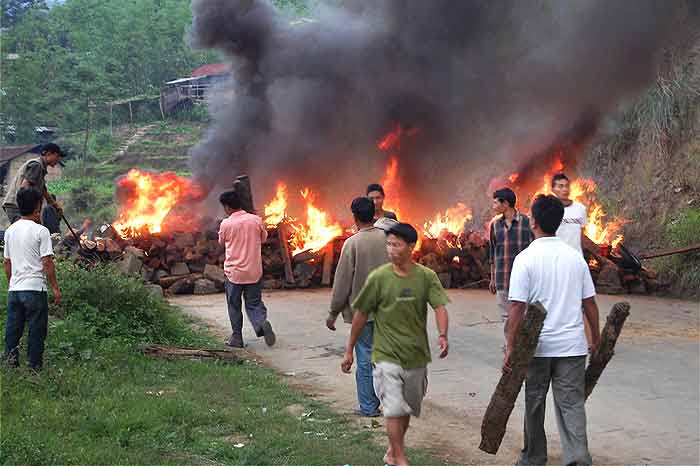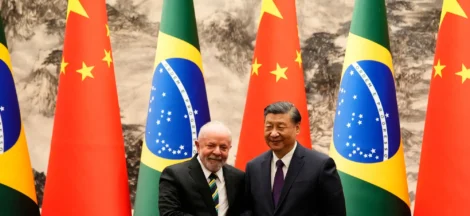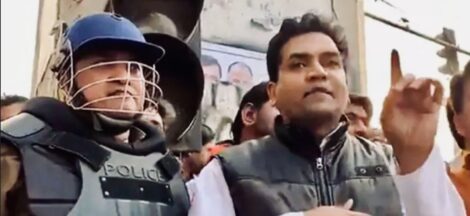By Ashis Biswas
KOLKATA: Recent Naga tribal reminders to the Indian Government and Northeastern states suggesting no final solution to Manipur’s problems would be possible without addressing the impending demand for ‘greater Nagalim’ first , have evoked no marked public reaction.
Most NE-based observers said that since the Nagas resident in Manipur were always regarded as ‘native’ to the State as the non tribal majority Meiteis, it was only a question of time before they made their stand known as a fresh ethnic strife had erupted, this time involving the Kukis.
While not being directly involved in the present spell of violence, Nagas being mostly Christians were upset over some aspects of the situation prevailing in Manipur. Some churches and other places of worship were burnt, which worried the community. Nagaland media carried detailed accounts of the incidents and major Naga organisations condemned the torching of the churches.
In recent weeks, according to some observers, a measure of agreement seems to have been worked out between the Kuki tribe and the Nagas. The renewed Naga appeal for an urgent Govt decision on the long standing demand for greater Nagaland, has now been supported by the Kukis. This suggests a shift from the earlier stand taken by some Naga organisations during the early phase of the violence that erupted on May 3.This year.
As the ethnic violence spiralled out of hand, there was a strong demand from the Kuki community, which felt targeted by the Meiteis and a section of the Bharatiya Janata Party-run (BJP) state administration, for a separate territory within Manipur. This, despite the considerable number of Kuki leaders in the state Assembly, who had been elected on BJP tickets.
These leaders visited Delhi to meet Mr Amit Shah, Union Home Minister, Mr Rajnath Singh, Minister for Defence and others to demand better protection from the Manipur administration. They also pressed for a new territory for Kukis and other tribals.
In the neighbouring state of Mizoram, to which a number of scared Kuki families had fled from armed attackers, the call for a new Kuki homeland gained fresh momentum. None other than Mizoram Chief Minister .Mr Zoramthanga who won Kuki hearts for providing shelter to the hard pressed homeless migrants, publicly supported a proposal to divide Manipur into three separate zones. The rationale for making such a major change was to ensure future ethnic peace and harmony between Meiteis and various tribes like the Kukis, Zo, Hmars, Chin and the Nagas.
Nor surprisingly, both GOI and the Manipur state Government led by Mr Biren Singh (BJP) shot down the idea immediately. The demand to make Chief Minister Mr Singh step down, too, was nixed, Mr Shah himself ruling out the proposed changes in his meetings with Kuki leaders and in various other fora.
It was about this time that sections of Manipur media carried the views of some Naga leaders on the matter. They reasoned that only the non tribal Meiteis and the Nagas were the original and oldest recorded settlers of Manipur. As for the Kukis, there were historical references suggesting they had moved in from Burma sometime around mid nineteenth century or so. More than anything else, the message was a gentle reminder to all active stakeholders in the NE regional political scene , stressing that the kukis should not be taken for granted in any apex level decision-making process.
They were keen to assert their political position as much as the Meiteis , when it came to settling issues relating to territorial or other claims by different ethnicities — always a hyper sensitive issue in the complex Northeast political scenario.
Public support for the Nagas on the greater Nagaland issue came from the Kukis and Hmars. Naga organisations held public rallies on August 9 in four districts of Manipur where their presence is significant in numerical terms — Chandel, Tamenglong, Ukhrul and Senapati — to press for immediate action from centre on their long pending demand. In a memo addressed to the Prime Minister of India, they referred to the provisions of the framework agreement worked out between community leaders and GOI on Aug 3, 2015.
On behalf of Kukis, the Kuki Inpi Manipur (KIM) and for Hmars, the HmarInpui, expressed their solidarity with the United Naga Council(UNC), the sponsor of the rallies. In a subsequent statement, Kuki leaders stressed the common grievances occasionally raised by different tribes in the region, alleging discrimination, loss of fundamental and constitutional rights and the neglect of tribal interests by policymakers, administrators and major political parties, in the Northeast region.
For the record, a least 160 persons have so far been killed in Manipur ‘s ethnic violence that began on May 3 . Over 700 people were injured and an estimated 10,000 people were displaced as hundreds of houses, offices, and shops were gutted in outbreaks of mob violence. (IPA Service)




 Survey Reveals Arab Youth Seek Certainty In Religion And Tradition
Survey Reveals Arab Youth Seek Certainty In Religion And Tradition 